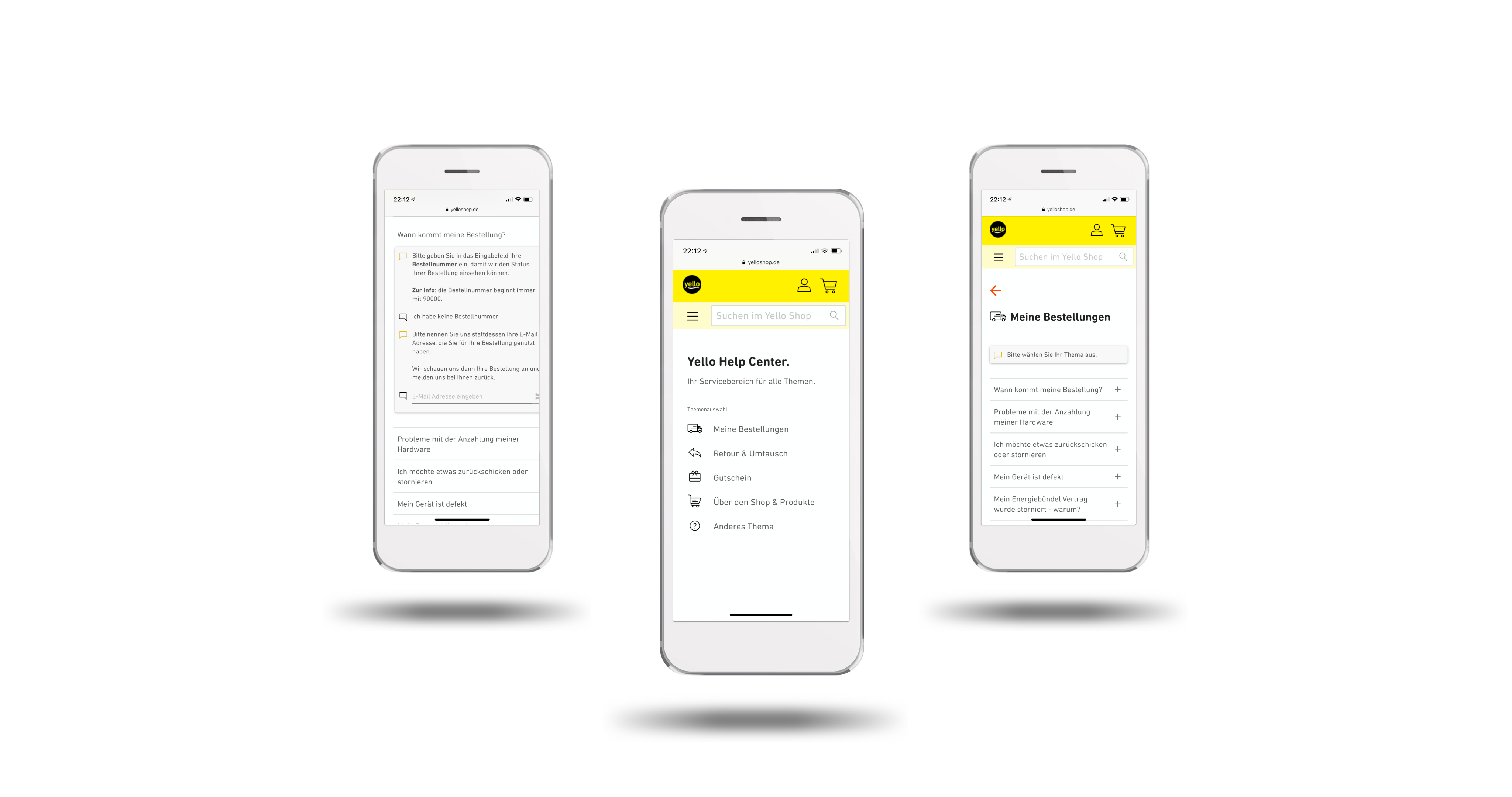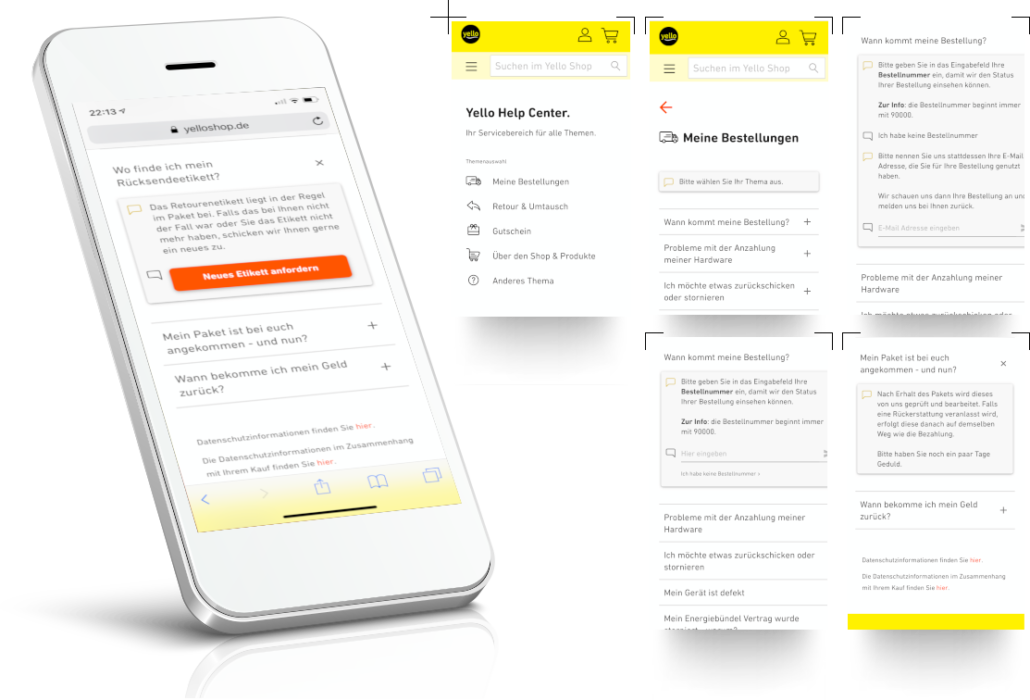Chatbots in customer service
Customer service bots have two primary goals: Doing monkeywork and increasing customer satisfaction.
When we say Monkeywork, we mean the background noise of recurring standard requests that flood and clog support. These standard requests are to be kept away from support. In this way, the bots give the support more time for the relevant queries, which take up more time. More time for complicated and complex customer inquiries also means an improvement in customer satisfaction for those customers who have direct contact with support.
Second, customer service bots are designed to directly increase customer satisfaction by drastically reducing response time and providing customers with a real-time solution to their problem with their standard query.
In both cases, service bots increase quality, which in turn has a positive effect on the perception of your company in the eyes of your customers. And, at the same time, your company’s competence in dealing with your customers also increases. All factors contribute to customer loyalty in the long term, because a satisfied customer will come back to you and talk positively about your experience.
Contact us today and let us talk about your individual case study!
Why you should work with us…
Creativity in conception, precision and pragmatism in implementation make our bots convert in front of the customer.
Services
Advantages
The approach makes the difference…
There are several application examples where the service bot can be interposed. An often used approach is to connect the bot to the email channel of the support so that the bot scans the incoming emails and replies automatically. This approach is still quite complicated at the moment and faces some challenges. In addition to the technical challenges of interpreting the email text correctly, the company must ask itself whether it should tell the customer that the answer to their email came from a machine or not?
Services
We have also developed another approach in which the service bot is installed exactly where the customer independently searches for answers. In this case, we use the customer’s learned behavior that the website has FAQs or a self-service area where the customer can find answers to the most common questions. We have had very good experience with this approach. Here, the customer himself is active and the company supports its customers with AI – discreetly and successfully.
Services
Why is this approach more successful than others?
Because first of all the user’s own research is rewarded. He does not expect such a smart and simple assistance for his problem. And secondly, it gives us the opportunity to obtain structured input from the user. This is not the case with an email with free text input. Of course, the bot also understands free text. However, we have found that it is easier for the user of the bot to enter structured input.
Application examples
Yelloshop Help Center
With the Yello Help Center Bot, we have developed a bot that can be recognized immediately as a “digital assistant” and is directly integrated into the website navigation. The user clicks through to his topic and hidden within the accordion navigation he finds the service bot.
Video of the Yelloshop Help Center Bot
We have put together a short video to give you an overview of the functions.
Since the Yelloshop is being rebuilt, the Yello Service Bot is currently offline and you cannot try it by yourself.

The FAQs as you know them
Grouped topics and the main points
The bot is within the subitems. The user finds the bot.
The Yelloshop Service Bot asks the user, depending on the issue, to identify himself by his order number or his email address as fallback. In general, any data of the user that is known to the company can be used to identify the customer.
The user can independently ask for the status of his order, print out a return label or initiate a return, including reshipment of the new product. Nobody is involved in any of these processes anymore, the Service Bot controls business processes in the background according to fixed business rules.

